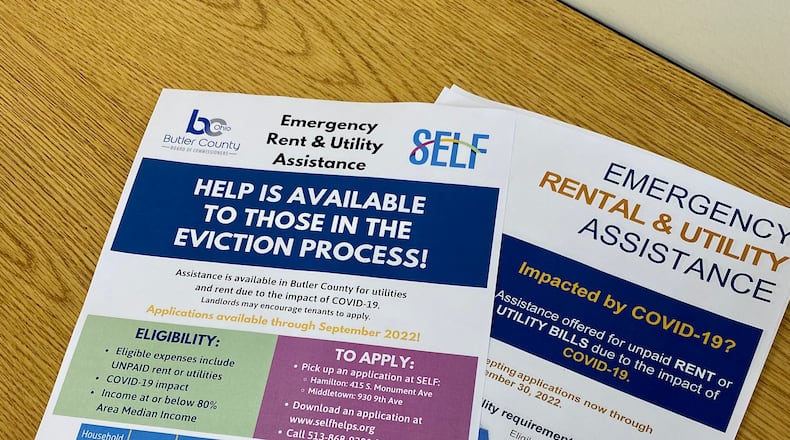The money was awarded in two tranches. The county first received $11.4 million in emergency rent and utility assistance and was promised $9.1 million in a second wave of allocations. The Treasury only sent $3.6 million of the $9 million allocation, and it ran out, so SELF had to suspend applications.
SELF started taking applications again at the end of October when the Treasury sent another $2 million and they has spent $370,437 since then in county money and $414,673 in other funds.
“We now have over 400 applications that are in a pending status,” Diver said. “We don’t think the need has lessened. We are now taking clients and serving clients that are in imminent risk of being evicted. So they’ve gotten a notice they’re going to have their possessions set out on the curb. They rise to the top.”
Diver said people who are not in danger of eviction can access funds directly through the state portal and asked if people are able to get help there to notify his office so they can be taken off a list of those who need help. Here is the website: https://development.ohio.gov/individual/energy-assistance/home-relief-grant.
The county is currently without $3.4 million it was promised.
The county’s Community Development Administrator, Susan Ellerhorst, said U.S. Sen. Sherrod Brown’s staff reached out to her after reading articles in the Journal-News about the issues with the Treasury.
“His aides had reached out to us to see if they could help because they saw the articles in the paper about issues with the funding,” Ellerhorst said.
She told the Journal-News that Brown’s office arranged a virtual meeting with her and a representative from the Treasury last Thursday.
“It was beneficial that they helped line up that meeting with us just so we could get clarification,” she said.
Brown told the Journal-News in a statement he was happy to help.
“Emergency Rental Assistance has been critical to helping families remain in their homes,” Brown said. “I will continue to work to ensure Ohioans get the answers they need about this essential resource.”
The Journal-News obtained emails the Treasury sent to the county’s development department that show the county was promised a $4 million allotment would be forthcoming on Sept. 30, but five days later, the amount had been halved. Treasury sent $2 million on Oct. 27.
The county already lost $1.4 million. The commissioners were allocated the second round of funding in June 2021 but chose not to collect it until the end of January because they wanted to gauge the need first.
The Treasury notified the county the day before the deadline it needed to expend 20% — or $1.8 million — of the $9 million tranche by March 31, but they were still drawing down the first pot of money.
Development Director David Fehr said it appears that money might be lost forever.
“We’re going to keep trying until they officially tell us no,” Fehr said. “We owe that to the folks that live here, we’re going to give our best effort.”
Commissioner Don Dixon told the Journal-News he also met with Brown’s office recently to discuss a number of topics and this one was one of them.
“Sherrod’s the guy to put on it, he knows that stuff inside and out and he’s been there a while, he knows how government works,” Dixon said. “He has a way of working through it so I’m still pretty confident we’re going to get it.”
Ellerhorst said Treasury told her until they reconcile her reports from the third and fourth quarters she won’t know if the $1.4 million can be recovered and “the fourth quarter might not be reconciled until summer of 2023.”
As for the remaining $2 million, “We’re still working with SELF on expending that $2 million that we just received. As soon as they are able to expend that money we are able to apply for the last portion of funds.”
Diver said they won’t have any trouble spending the funds because even though the pandemic is for all intents and purposes over, the negative effects continue.
“Demand is still high there are still a lot of people struggling due to the pandemic,” Diver said. “Even though time has passed COVID has not, we’re glad to still be here to be able to help.”
About the Author

